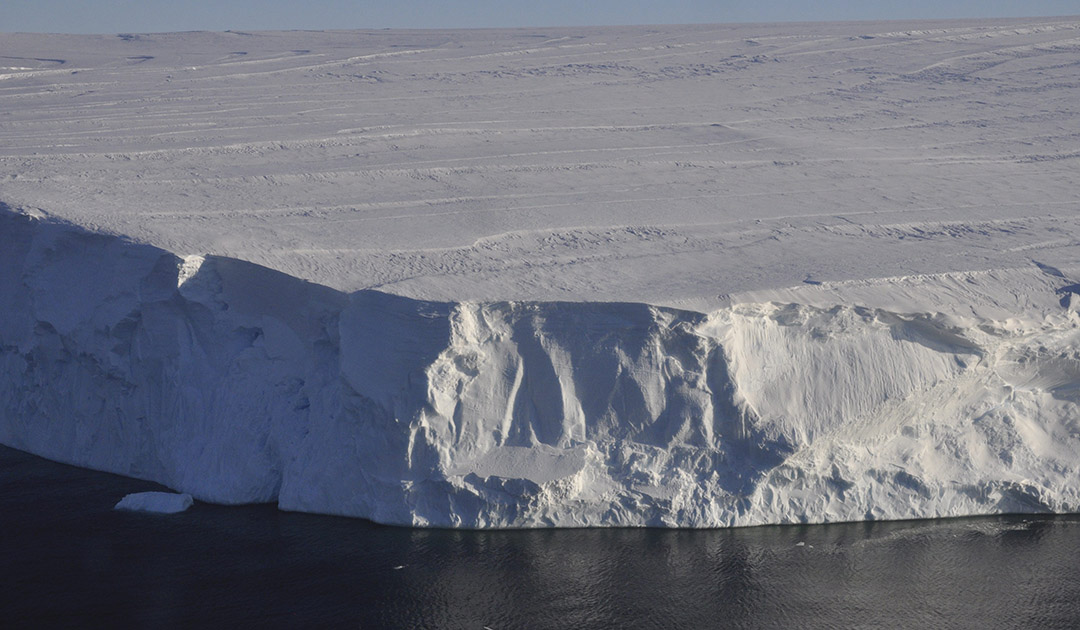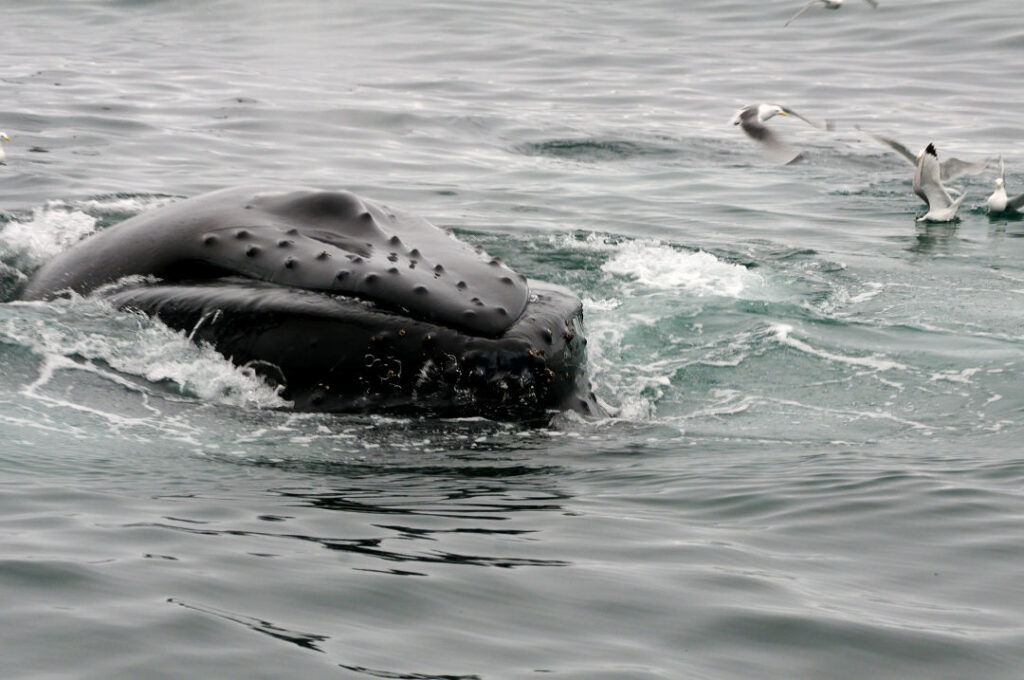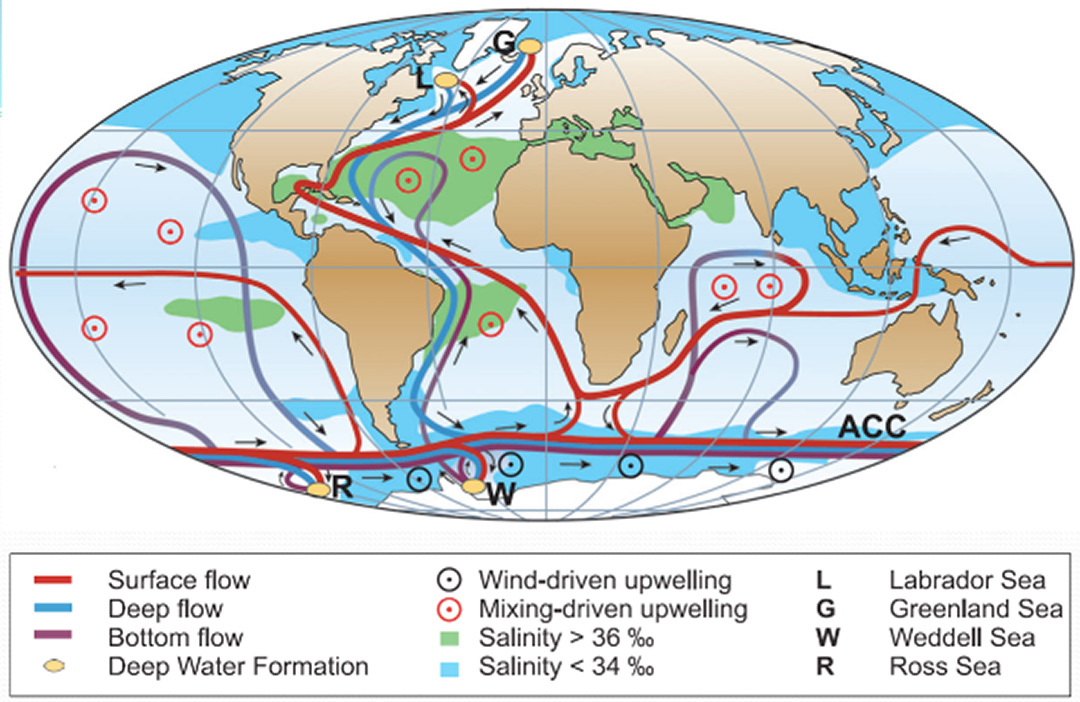
Deep-sea currents around Antarctica could slow by 42 percent over the next 30 years because of massive meltwater input. For life in the oceans and the climate, this would have major implications worldwide.
An Australian research team found in a new study, published in the prestigious journal Nature, that significantly less surface water will sink to the deep Southern Ocean over the next three decades if global carbon dioxide emissions continue unabated.
This so-called deep water formation, which also occurs in the North Atlantic, drives the global ocean circulation, also known as the thermohaline circulation or ocean conveyor belt. The thermohaline circulation is critical because it transports heat, carbon, oxygen, and nutrients around the globe, affecting climate, sea level, and the productivity of marine ecosystems. If deep water formation weakens or even stops altogether, the global circulation will also slow down or come to a standstill over time, with dramatic consequences for marine ecosystems and the climate.

“Our modelling shows that if global carbon emissions continue at the current rate, then the Antarctic overturning will slow by more than 40 per cent in the next 30 years – and on a trajectory that looks headed towards collapse,” Professor Matthew England, Deputy Director ARC Centre for Excellence in Antarctic Science at the University of New South Wales and leader of the current study.
The global overturning of water masses
Surface water sinks into the depths when it is “heavy” enough, i.e. has a high density. The lower the temperature (due to catabatic winds) and the higher the salinity of the seawater (due to evaporation and sea ice formation), the greater its density. However, the huge amounts of meltwater flowing into the Southern Ocean due to rapid warming in Antarctica are reducing the salinity of the surface water and thus its density, which consequently slows down the formation of deep water.
Antarctica’s deep water formation zones are in the Weddell Sea and Ross Sea, where about 250 trillion tons of cold, salty, oxygen-rich surface water sink each year. This water spreads northward, carrying oxygen to the depths of the Indian, Pacific, and Atlantic Oceans.
“If the oceans had lungs, this would be one of them.”
Professor Matthew England

For the current study, the research team modeled the amount of Antarctic deep water that would be produced by 2050 under the IPCC high-emissions scenario. Among other things, the model captures the prediction of how meltwater might affect circulation, which previous models could not.
For millennia, this deep ocean current, the Antarctic Bottom Water (AABW), has remained relatively stable, but it is expected to slow significantly in the coming decades. In view of the continuing and even increasing greenhouse gas emissions, there is every reason to believe that this is the case.
Effects of a slowed circulation
Should deep water formation come to a complete halt – that in the North Atlantic is also already weakening – the water in the ocean below 4000 meters depth would no longer move. “This would trap nutrients in the deep ocean, reducing the nutrients available to support marine life near the ocean surface,” Professor England said.
According to co-author Dr. Steve Rintoul of CSIRO, slowing the overturning will also lead to faster warming of the deep ocean, which is already underway. In addition, the slowdown also affects the ocean’s ability to absorb carbon dioxide from the atmosphere. Dr. Adele Morrison, a researcher at the Australian Centre for Excellence in Antarctic Science who also contributed to the study, tells the BBC that when ocean circulation slows, surface water quickly reaches its carbon uptake capacity and is then no longer replaced by non carbon-saturated water that comes to the surface from greater depths.
“The other larger implication that it could have is a feedback on how much of Antarctica melts in the future. It opens a pathway for warmer waters which could cause increased melt, which would be a further feedback, putting more meltwater into the ocean and slowing down circulation even more,” Dr. Morrison says.
Current IPCC climate change models do not yet include the impact of Antarctic meltwater on ocean currents, but it will be “considerable,” according to Professor England.
Julia Hager, PolarJournal
More on the subject:





